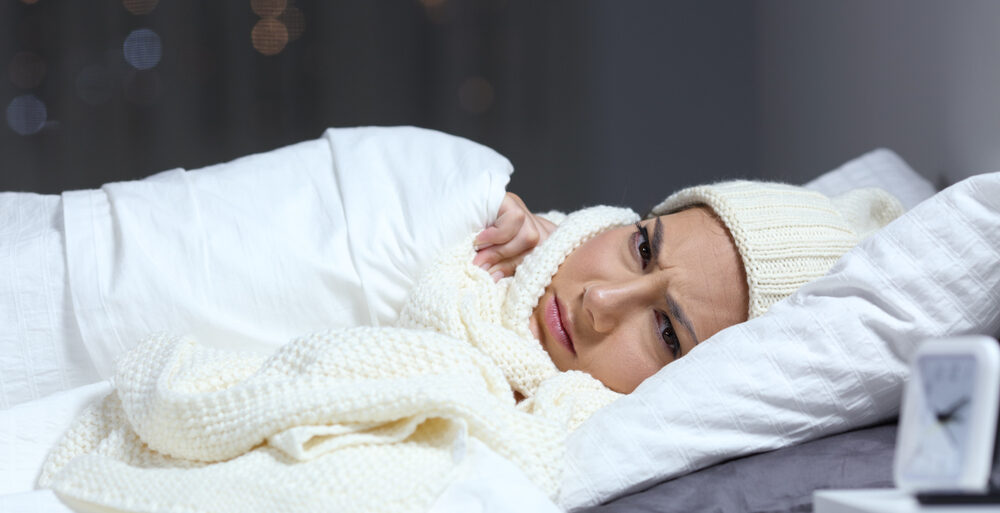Menopause is a significant life transition that affects every woman differently. While most people are familiar with hot flashes as a hallmark symptom, fewer realize that cold flashes can also be a troubling and misunderstood part of the menopausal experience. These sudden sensations of intense chilliness can leave women reaching for blankets, even in warm environments. But are they real? And what does clinical research have to say?
What Are Cold Flashes?
Cold flashes are sudden feelings of coldness or chills that can occur independently or follow a hot flash. They are believed to result from hormonal changes—particularly a decline in estrogen—that disrupt the hypothalamus, the brain region responsible for regulating body temperature. As the thermoregulatory system becomes unstable, women may experience extreme sensations on either end of the temperature spectrum.
The Science Behind Cold Flashes
Although cold flashes are less frequently studied than hot flashes, emerging research confirms they are part of the broader category of vasomotor symptoms (VMS).
One key study by Zhang et al. (2021) published in Endocrinology shows that estrogen plays a crucial role in modulating thermoregulation through hypothalamic pathways. With declining estrogen levels, the thermoneutral zone narrows, making women more susceptible to feeling both hot and cold (Zhang et al., 2021).
Clinical assessment tools like the Menopause-Specific Quality of Life Questionnaire (MENQOL) also include cold sensations as a legitimate symptom, supporting their relevance in menopause research (HealthShots, 2023).
A 2023 HealthShots report further emphasized that as many as 50–70% of women may experience cold flashes or chills during menopause due to neurotransmitter imbalance, even though these symptoms are underreported.
Recognizing the Pattern
Some women report that cold flashes occur following hot flashes, likely due to the body overcorrecting as it attempts to return to homeostasis. Others describe nighttime cold spells that interrupt sleep. These patterns support the idea that cold flashes are neurologically driven responses to hormonal shifts.
Management and Relief
Just like hot flashes, cold flashes can be managed through a combination of approaches:
- Hormone Replacement Therapy (HRT) may help stabilize the thermoregulatory system.
- Layering clothing and adjusting room temperature can mitigate discomfort.
- Mindfulness and stress reduction may help regulate autonomic responses contributing to these episodes.
Final Thoughts
Cold flashes are real and recognized by both clinicians and researchers. While they may not receive the same attention as hot flashes, they are a legitimate and often distressing symptom of menopause. Raising awareness and including cold flashes in diagnostic and therapeutic conversations is essential for supporting women during this transition.
To help you manage symptoms like cold flashes, explore our app The Pause—a science-backed platform for symptom tracking, personalized education, and daily support throughout your menopausal journey.
References
HealthShots. (2023). Cold flash could be a symptom of menopause. HealthShots. https://www.healthshots.com/preventive-care/reproductive-care/cold-flash-could-be-a-symptom-of-menopause/
Zhang, Z., Mahoney, M., & Ko, C. (2021). Effects of estrogens on thermoregulation. Endocrinology, 162(2), bqaa196. https://doi.org/10.1210/endocr/bqaa196
The North American Menopause Society. (2004). Estrogen and progestogen use in postmenopausal women: 2004 position statement of The North American Menopause Society. American Family Physician, 70(2), 393–406. https://www.aafp.org/pubs/afp/issues/2004/0715/p393.html
Menopause Now. (2020). Hot flashes and cold sensations. Menopause Now. https://www.menopausenow.com/hot-flashes/articles/hot-flashes-cold-sensations
Stripes. (2023). Cold flashes and menopause: What to know. Stripes. https://stripesbeauty.com/blogs/the-body/cold-flashes

